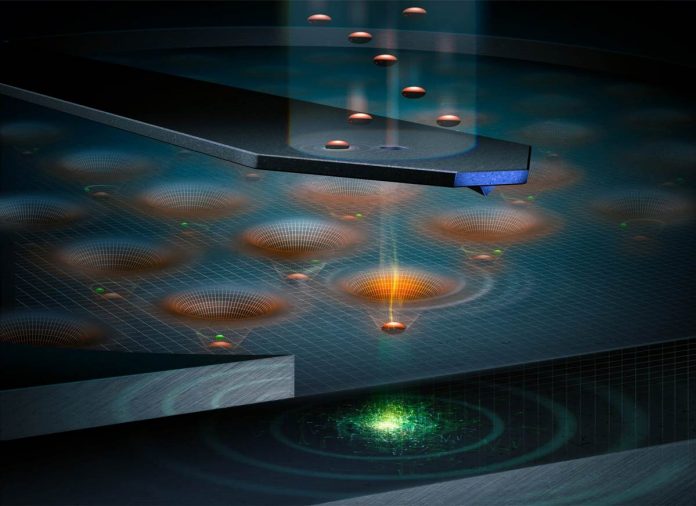University of Melbourne researchers have found a technique for embedding single atoms in a silicon wafer one-by-one. The new technology has the potential to make quantum computers using the same methods. These methods have given us cheap and reliable conventional devices which contains billions of transistors.
Till now, scientists have implanted atoms in silicon. But it was a haphazard process. In this process a silicon chip gets showered with phosphorus. This implant in a random pattern.
The new method creates large scale patterns of counted atoms. These are controlled by their quantum states which can be manipulated.
This technique takes advantage of the precision of the atomic force microscope. This has a sharp cantilever that gently ‘touches’ the surface of a chip with a positioning accuracy of just half a nanometre. This is the same as the spacing between atoms in a silicon crystal.
Scientists drilled a tiny hole in this cantilever. Then they showered with phosphorus atoms one would occasionally drop through the hole and embed in the silicon substrate.
The scientists know precisely when one atom. This atom become embedded in the substrate. Then they can move the cantilever to the next precise position on the array.
Scientists discovered that the kinetic energy of the atom as it plows into the silicon crystal. Its energy dissipates by friction and can be exploited to make a tiny electronic ‘click.”
This is how scientists found out an atom has embedded in the silicon and to move to the next precise position.
What is quantum computing and why is it important?
These computers perform calculations by using the varied states of single atoms. It is similar to the way conventional computers use bits.
Bit has only two possible values which is 1 or 0. A quantum bit can be placed in a superposition of 0 and 1. Pairs of quantum bits can be placed in a more peculiar superposition state. Scientists named it as entangled states.
If we add more quantum bits then it will create an exponentially growing number of entangled states. This will constitute a powerful computer code that classical computers do not have. This density of information gives quantum processors their computational advantage.
The quantum mechanical oddness can create computers that can solve certain computational problems which conventional computers can not answer because of their complexity.
Practical applications have new ways of optimizing timetables and finances. It includes unbreakable cryptography and computational drug design.

